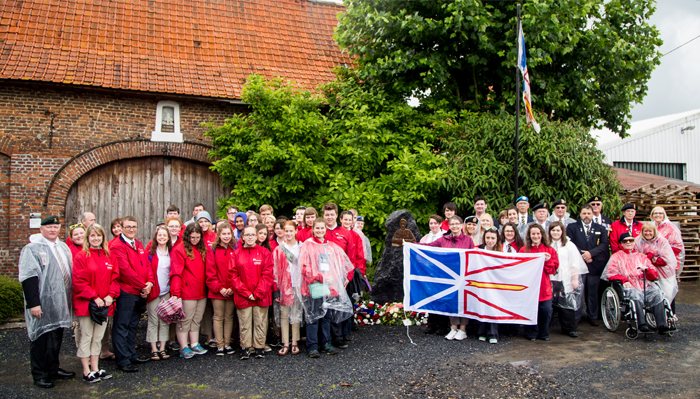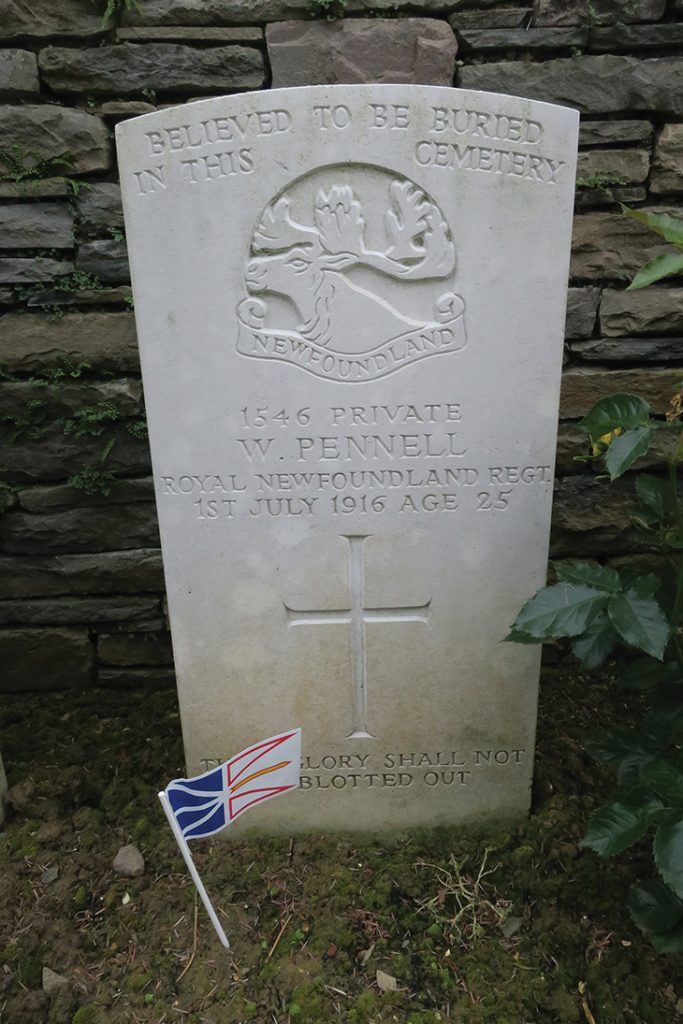PTE. WILLIAM PENNELL
By By Dr. Sonya Corbin Dwyer, BA(Hons.)’91, B.Ed.’91; Michelle Park, BA(Hons.)’93, B.Ed.’93; and Sophie Peckford

Last fall my niece, Sophie, decided she wanted to do a family tree for her dad for Christmas. She discovered that she had two great-great-great uncles who were soldiers in the First World War — brothers William and Charles Pennell. Both enlisted in St. John’s with the Newfoundland Regiment in March 1915. After training, William was shipped overseas and was killed in action at Beaumont-Hamel. He was 22 years old and left behind a wife and son.
Through The Rooms’ online archives Sophie found a letter that William’s mother, Martha Ann, had written to the agent general for Newfoundland in London, England. In it she requested a photograph of her son’s grave in France. The letter was passed on to numerous people until finally the deputy colonial secretary responded to her.
He stated that while he would like to comply with the request, the rule had been that the memorial card went to the next of kin and, “of course one card only” was issued for each person. He explained that William had named his wife as his next of kin so the card was sent to her.
Dr. Sonya Corbin Dwyer, BA(Hons.)’91, B.Ed.’91
I teach at Corner Brook Regional High; Sophie was in my Canadian History class last year. She’s an absolute gem. So keen and bright.
It was a few months after we had taught the unit on the First World War, and I mentioned to the class there was an opportunity to enter First World War projects in the regional heritage fair held by the Historic Sites Association of Newfoundland and Labrador. This year, Ambassador Award students would be chosen from across the province as part of the Honour 100 program.
I told the students about my own trip to Beaumont-Hamel in 2015, also with the Honour 100 program, and what a powerful experience it was to see the graves of so many young men from the towns and communities we all know so well.
After class, Sophie asked me about the pictures I took on my trip and told me the story of her great-great-great grandmother’s request for a photograph. The name Pennell jumped out at me. That night, I found a photo of Pte. William Pennell’s gravestone that I had taken in Beaumont-Hamel, just by chance, from among hundreds of gravestones that line the cemetery. I sent it to Sophie’s mom.
As a family, they were emotional and overwhelmed by the coincidence.
Michelle Park, BA(Hons.)’93, B.Ed.’93
After I spoke to Ms. Park and saw her photo, I knew I had to go further and enter the regional heritage fair here in Corner Brook. The research I did was about my family, my great-great-great uncle William and his younger brother, Charles. It was all about their lives, what happened to them during the First World War, and the effect it had on the family back home.
My project won at the regional fair. That meant I would be travelling with a delegation of 18 other students from Newfoundland and Labrador on a tour of Europe to retrace the steps of the Royal Newfoundland Regiment.

I was the first member of our family to visit the places where my uncles died: Charles at Monchy-Le-Preux and William at Beaumont-Hamel. When I was there, I thought about what they saw, heard and experienced, and how it was so different from the way I experienced France. The beautiful memorials I visited were the muddy battlefields where they and their friends fought and died.
A few days before the 100th anniversary, we did a tour of Beaumont-Hamel, before the crowds of people all gathered at the site. This was when I got to visit my uncle’s grave. That was a really special moment, especially because I had anticipated it for so long. I laid a Newfoundland and Labrador flag at William’s headstone.
Sophie Peckford
Sophie Peckford is a Level II student at Corner Brook Regional High School; Michelle Park is a French immersion teacher at Corner Brook Regional High School; and Dr. Sonya Corbin Dwyer is a professor in the Department of Psychology at Memorial’s Grenfell Campus.





